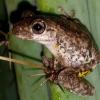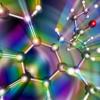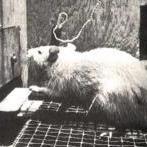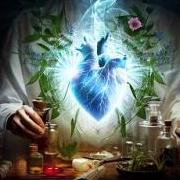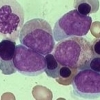Leaderboard
Popular Content
Showing content with the highest reputation on 15/12/15 in all areas
-
3 pointsHi guys, here are some new updates for my seed list. All seeds mentioned here are available. I love trading but can also sell some of them if you want! Needless to say that all those types were harvested from culture plants and NOT illegally taken from the wild. If you are interested in anything, let me know. I am located in Europe, which is why this posting needs a disclaimer that not all seeds can be sent to Australia. Most Trichocereus types are not a problem and if you are interested in anything else, let me know and I´ll have a look at the AQUIS list. Enough talking, check out my list! Trichocereus Pachanoi / Peruvianus Intermediate (pic 1) This is one of the most badass Pachanoi types on the market. But it can also be very spiny and is somewhere between Pachanoi and Peruvianus. Viability is great and tested. Trichocereus pachanoi x Tr. peruvianus Trichocereus tunariensis (Cochabamba) Trichocereus tarapacana / Soehrensia taracapana Trichocereus bridgesii type from the Rio Abajo / La Paz in Bolivia Trichocereus puquiensis from Puquio. I do not know much about this type yet. What I do know is that this is probably a five ribbed version from Puquio that´s somewhere between Tr. cuzcoensis and Tr. peruvianus. . Trichocereus poco / Trichocereus Tarijensis Trichocereus tacaquirensis (Tacaquiri, Bolivia) Trichocereus narvaezensis (no real info on this one yet) Trichocereus taquimbalensis (Lecori, Bolivia And the rest of my seed list: Trichocereus Bridgesii Australian Hybrid Seed Trichocereus Cordobensis (almost sold out now). Trichocereus Peruvianus Matucana Trichocereus Peruvianus - Rio Lurin Trichocereus Peruvianus or Cuzcoensis Huancavelica Trichocereus Tarmaensis Trichocereus Knuthianus from North Peru Trichocereus Andalgalensis x Tr. Grandiflorus Crassicaulis Trichocereus Mix Trichocereus Spachianus Stetsonia Coryne Matucana Madisonorium Lophocereus Schottii Trichocereus Camarguensis KK1414 Armatocereus Matucanensis Melocactus Peruvianus Azureocereus Hertlingianus Neoraimondia Roseiflora Oroya Borchersii Arequipa sp. Espostoa nana Haageocereus Acranthus Backeberg Loxanthocereus Hoffmannii var. Seniloides Tephrocactus floccosus Loxanthocereus Pullatus Rauh & Backeberg Echinocactus grusonii
-
2 pointsstoopid over lords https://www.youtube.com/watch?v=O52jAYa4Pm8https://www.youtube.com/watch?v=O52jAYa4Pm8
-
2 pointsdcliw a nurse you get along with leaves your medicine draw unlocked n winks at you so you can have your diazipam and tem tabs whenever you feel like it. nice.
-
2 pointsNice pup bedofspines, my two TBM have pupped in the last few weeks too. The first pic was taken on 25/11 and the second pic just yesterday. So it's about 3 weeks old... the pups seem to grow pretty quick. Noticed last week that the other TBM had also pupped. Not sure how long this one has been growing but looking good! :D These were the first two cacti given to me which started off my collection so I'm very happy to see the sudden new growth
-
1 pointWhat could you live without? I started thinking about this awhile ago. Partly through necessity, but then I became interested in following the idea to see how far it could go. I was inspired by the whole “tiny homes” movement - not that I actually want to live in a trailer home - but I was interested in their ideas. Basically they said: why does it cost hundreds of thousands of dollars and decades of your life (if you’re lucky) to own your own home? Is it because we have an idea of what kind of house is an acceptable home? Spare bedroom for guests, a shed for the tools, a big backyard… but how often do most people use those things? Once a month? Once a year? Wouldn’t it be cheaper, instead of paying the tens or hundreds of thousands extra to buy the three-bedroom house with swimming pool & 2-door garage, to just buy a one bedroom cottage and then rent tools when you need ‘em, sleep on the floor when you have guests, maybe use a share-car service and spend more time in the local park or gym rather than needing a private workout room or pool. Whatever the activity, there’s probably a way you could manage to do it in a smaller space, or in a public space (yes, all entendres intended - but that’s probably a separate discussion). Most people seem to cringe at the idea - what would you do with all your stuff? Well the tiny-home solution is to just not have much stuff, to borrow or rent tools & things as needed, then get rid of them again. Personally, I think that’s taking it too far - I’m a hoarder, and I like my tools & reference books & out-of-season clothes to be there when I need them. Not everyone has the luxury of being able to count on buying/borrowing/renting whatever they need, whenever they need it. And from what I gather a lot of the tiny-homes folks also keep storage lockers anyway. But I thought the point was an interesting one - how much money are you paying for a house big enough to keep all that crap in? If you could own your own house for a quarter the standard price, if only you discarded 80 or 90% of your crap, would you go for it? Or do you really need that spare bedroom to store all your backup toasters & fondue sets? So that’s how it started originally, thinking about housing & how I could ever possibly afford to build my own house on the income from my part-time unskilled award-wage shitkickin job (so please excuse all the personal digressions in this post, I’ve just left them in as examples) … and then I started expanding the idea - instead of just wondering “can I live without lots of stuff & a big house to make things cheaper?”, I started thinking, “if I can live without a fridge/freezer, I won’t need a big reliable solar system for my electricity, which might knock a good $20K off the cost”, and “hey, I don’t even want an indoor bathroom”, and “if I can learn to make my own X, then I won’t have to buy it” (where X is well, almost anything - bread, fuel, fenceposts, string, entertainment…) And then other things - could I live without a car in a rural area? You’d say no (& I do recognise the safety issues) but I’ve known plenty of folks who do. Because that’d be about half of my income gone right there, just maintaining & running a vehicle good enough to handle those roads. And half the reason for having a reliable vehicle in the first place is so you can get to work… to make enough money to run the car… and round it goes. Or maybe instead I can just ride to work with my boss, and then do a days work on my neighbours fences whenever I need to borrow his spare ute, and save myself the expense of keeping my own. As an added bonus, this would make me really think about whether I needed to go into town, rather than just making recreational shopping trips out of boredom, which would save plenty more money. When you have to make conversation with your racist neighbour & then drive for two hours to buy that wine & cheese, you start wondering if you can make do with some home-brew & raiding the vege garden instead. And then if food is one of your major expenses, well I’ve already had times when my food bill couldn’t have been much more than $1000/year, and that was with full-time work/study and without a real vege garden. How much could I knock off the bill if I put in a few good days work in the garden each month, instead of spending that time working for someone else so I can buy food from the supermarket? Sure it might take some time to harvest & prepare & preserve all that food yourself, but if you don’t have to work a full-time job to pay for it all, then you’ll have a lot more time on your hands! And which would you rather do, spend your time working your current job, or spend your days digging potatoes & making kimchi? I guess we sort of started this discussion in the penny-pinching thread awhile back, talking about tips & tricks for saving money on things. But now I’m trying to think bigger, about lifestyle changes which would mean needing and buying less things overall. I just feel like we float through, or are pushed through our lives without often sitting down to think about these things from a cost-benefit standpoint. How much does it cost us to have all this stuff, all those possessions, this much privacy & personal space, this many “conveniences”, our “job security”? How much do we pay in time & stress & RSI & lifelong back problems? Is it really fucking worth it? For what? He who dies with the most toys wins? Unless you’re a pharaoh you ain’t taking it with you, so what’s the point? Perhaps we could be striving for happiness in each day, rather than waiting on some nebulous future paradise (like “heaven” or “retirement”). So what do you think? What could you live without if it meant you could work 1 or 2 days a week instead of five? Or for those already living on a pension or casual employment or some other sub-poverty-line income, have you thought about accepting Jesus Christ as your personal saviour? Or um, a tiny home. Or some other life simplification. Whichever floats your boat (hey, houseboats! fuck yeah). Or Jesus Christ in a tiny home. I think I’m tangentalising here. I blame the reckless drug abuse. But that’s kinda my point (yeah, nice save). How much of our time and money is spent just distracting ourselves from the fact that we don’t actually like our lives, because we spend half of them working to pay for the distractions from our crappy lives! It’s that same fucken circle I was talking about with the car. Circle of life my arse, it’s a circle of crap & I want out. Living in a tent and eating nettles really does not sound so bad, if that’s the way to escape then I think I can live with that. I guess I’ll find out. I’m sure I’ll miss all the beer & skittles, hookers & blow, bread & circuses like my own left arm, but after the last year I believe that you don’t need all your limbs to be whole anyway. I figure shit is always bound to hit sooner or later, but maybe if I’ve opted for a bit of voluntary simplicity in the meantime, then the involuntary sort of deprivations won’t hurt so much when they arrive. Prepping for the soul, I guess. Or maybe just a midlife crisis, who bloody knows? I really can’t tell anymore if this kind of thinking is soundest rationality or antisocial insanity, but happily I no longer feel like I have to care. Maybe I've just read too much Fight Club. I get that I’m in an easier position than most to make these choices, as I have some land, no dependents, enjoy working out how to do stuff for myself, and am already a recluse with a childish “fuck yourself” attitude towards society in general, so living out bush & growing my own beans doesn’t seem like a big leap from where I’m standing now. But I know that a lot of you folk share at least some of these traits, and I’m curious to know what you think about all this. What might you live without? Electricity? Steady work? Human company? Stable accommodation? Do you like making things for yourself? You mightn’t think that your gardening & carpentry & baking & brewing & so on skills are good enough to make a living from, mine certainly aren’t - but as they say there's a difference between making a living & making a life, and I wonder.. maybe they’d be good enough to just make a life from.
-
1 pointHere's a recent article: Consumption of anthocyanin-rich cherry juice for 12 weeks improves memory and cognition in older adults with mild-to-moderate dementia. PURPOSE:Dietary flavonoids, including anthocyanins, may positively influence cognition and may be beneficial for the prevention and treatment of dementia. We aimed to assess whether daily consumption of anthocyanin-rich cherry juice changed cognitive function in older adults with dementia. Blood pressure and anti-inflammatory effects were examined as secondary outcomes. METHODS:A 12-week randomised controlled trial assessed cognitive outcomes in older adults (+70 year) with mild-to-moderate dementia (n = 49) after consumption of 200 ml/day of either a cherry juice or a control juice with negligible anthocyanin content. Blood pressure and inflammatory markers (CRP and IL-6) were measured at 6 and 12 weeks. ANCOVA controlling for baseline and RMANOVA assessed change in cognition and blood pressure. RESULTS:Improvements in verbal fluency (p = 0.014), short-term memory (p = 0.014) and long-term memory (p ≤ 0.001) were found in the cherry juice group. A significant reduction in systolic (p = 0.038) blood pressure and a trend for diastolic (p = 0.160) blood pressure reduction was evident in the intervention group. Markers of inflammation (CRP and IL-6) were not altered. CONCLUSION:Inclusion of an anthocyanin-rich beverage may be a practical and feasible way to improve total anthocyanin consumption in older adults with mild-to-moderate dementia, with potential to improve specific cognitive outcomes. For more on cognitive benefits: Berry Anthocyanins (Blackcurrant, Blueberry, Cherry, Cranberry, Grape) "As shown in Table 2, berries contain a range of different flavonoid subclasses, but they are typically richest in anthocyanins. Initial berry studies predominantly investigated the cognitive effects of whole fruit. For example, Dodd [25] demonstrated improved accuracy on a letter memory task (measuring working memory) following freeze dried whole blueberries (200 g fresh equivalent, 631 mg anthocyanidins), in 19 young adults at a postprandial time point of 5 h (d = 0.57). The study employed a double blind, crossover design with an energy matched control condition. No effects were observed at an earlier time of 2 h or for other measures of executive function, memory, or mood. For a subset of participants, blood samples taken 1 h postprandially revealed a trend towards increased plasma levels of brain-derived neurotrophic factor (BDNF) in the blueberry condition. Unfortunately, cognition was not measured at this time point so it is impossible to say whether the neurochemical changes are related to the cognitive outcome. In the same study, older adults’ BDNF values decreased from baseline for both blueberry and placebo conditions, but the decrease at the 1 h time point was attenuated in the blueberry condition. These older adults (n = 18) showed improved performance on an immediate word recognition task at both 2 h (d = 0.44) and 5 h (d = 0.69) postprandially, but no improvements in executive function or mood were observed. A later study by Whyte and Williams [26], using fresh whole blueberries (200 g, 143 mg anthocyanins), investigated cognitive effects in children. They found no effects at 2 h for a range of executive function tasks, but did observe a significant improvement in delayed word recall using the Rey auditory verbal learning task (RAVLT) (d = 0.74). This was a small, crossover study with only 14 participants. As no baseline measures were taken, variations in performance across test days may have reduced the statistical power. Nevertheless, the medium effect size for the RAVLT provides good evidence for positive effects of blueberry flavonoids in children. Whyte, Schafer and Williams [27] conducted a larger (n = 21) double-blind, placebo-controlled, crossover study investigating the cognitive effects of 2 separate blueberry doses (127 mg and 253 mg anthocyanins), again in children. The highest dose resulted in significant improvements in immediate word recall after 1.25 h (d = 0.80), and in delayed word recognition after 6 h (d = 0.78). Improved accuracy was observed during a flanker interference task after 3 h, although only for cognitively demanding incongruent trials (d = 0.78). However, reaction times for a Go-NoGo measure of inhibition revealed significantly faster performance following the placebo compared with the blueberry interventions. The positive blueberry effects in older adults and children appear to be focussed on episodic memory, whereas improvements in executive function are more consistent in young adults. The differences in cognitive domains may be an artefact of the small sample sizes, but could also be indicative of age differences in the capacity for improvement in underlying neuronal structures. For example, hippocampal function may be more receptive during development in childhood and decline in old age, whilst frontal regions associated with executive function may be more sensitive in young adulthood. It is noteworthy that neurochemical changes in BDNF were apparent after 1 h, yet distinct time points for memory effects emerged at 1.25–2 h and 5 h, but not at an intervening 3 h time point. At this stage only BDNF trends have been observed, and not directly in association with cognitive changes. Although it is perhaps premature to comment on the relationship between acute changes in cognition and BDNF, it has nevertheless been posited that flavonoid induced increases in BDNF may facilitate stronger memory encoding [27]. Possible mechanisms of action are discussed below. Overall, the timings of cognitive effects are likely to be related to the digestion, absorption and metabolism of flavonoids, but further mapping of cognitive and physiological observations is required in order to resolve inconsistencies within the current observations. The flavonoid content of blueberries is known to vary widely depending on growing, processing and storage conditions [28,29]. The same 200 g quantity of whole blueberries used in the first two studies [25,26] described above showed extreme differences in flavonoid content (631 mg anthocyanidins and 143 mg anthocyanins respectively). This highlights the importance of analysing fresh fruits for their flavonoid content when conducting an intervention. It is also important to note that compositional analysis of anthocyanins typically (but not exclusively) involves the removal of saccharide conjugates prior to quantification; therefore anthocyanin content is often reported as anthocyanidin equivalent. This difference is critical when comparing doses between studies. For example, a berry intervention reported to contain 100 mg cyanidin may actually contain 156 mg chrysanthemin (a saccharide of cyanidin). Some studies reviewed here appear to use the terms anthocyanins and anthocyanidins interchangeably without acknowledging this distinction, making it unclear whether a reported anthocyanin dose is actually referring to an equivalent anthocyanidin dose. Similarly to blueberries, blackcurrants are a rich source of anthocyanins. Watson et al. [30] conducted a double-blind, controlled crossover trial of two blackcurrant extracts (cold-pressed juice or freeze-dried powder). Improved attention compared with an energy-matched control was observed in 36 young adults during a 70-min-long, cognitively fatiguing battery, beginning 1 h postprandially. Specifically, declining accuracy on a rapid visual information processing (RVIP) task was attenuated after taking the powdered extract (d = 0.10, d = 0.47, d = 0.47, d = 0.49, d = 0.49, d = 0.59, d = 0.56, measured for 7 task repetitions; once every 10 min). Similarly, a slowing of reaction time on a digit vigilance task following both blackcurrant and placebo interventions was attenuated after taking the juiced extract (d = 0.60, d = 0.73 and d = 0.60 for the 1st, 4th and 7th repetitions of the task, respectively). No effects were observed for the Stroop test (a measure of inhibition and attention), or for subjective measures of mood and mental fatigue. The total polyphenol content of the two extracts were matched at 525 mg/60 kg bodyweight. However, the anthocyanin content differed slightly; 483 mg/60 kg bodyweight for the powder and 467 mg/60 kg for the juice. This difference was also reflected in the analysis of plasma anthocyanin levels, which were observed to be higher following consumption of the powdered extract compared with the juice. Interestingly, the juice but not the powder was observed to inhibit platelet monoamine oxidase (MAO) and to attenuate blood glucose decline over the duration of the 70-min task battery. This study suggests that the way an extract is prepared may influence cognitive and physiological outcomes, however as different blackcurrant cultivars were used for each extract, the contrasting observations may simply represent compositional differences such as the ratio of flavonoid subclasses present. For the juiced blackcurrant extract, MAO inhibition and blood glucose regulation emerge as possible mechanisms of action further to the neurochemical changes observed for blueberries. The significant cognitive effects were observed for tests of executive function (RVIP and to some extent vigilance) which is consistent with the executive function benefits reported in healthy young adults following blueberry anthocyanins. In a double-blind crossover intervention study, Hendrickson and Mattes [31] investigated whether an acute dose of grape juice would mitigate deficits in mood and cognition that commonly occur following a large meal. Approximately 600 mL (10 mL/kg), containing around 580 mg anthocyanins, was administered to young adult smokers along with a standardised lunch. Smokers were selected on the rationale that this population have an increased propensity to oxidative stress, and because smoking abstinence can exaggerate the post-meal dip in cognitive or affective state, thus this population may be more sensitive to the effects of flavonoids than healthy non-smokers. This was a large study (n = 35) with considerable statistical power, yet no significant effects of grape juice were observed 1 h postprandially when compared to an energy matched placebo condition. Mood ratings for positive mood states (pleasure, arousal and vigor) were observed to decline under both grape and placebo conditions, similarly ratings of negative mood states (confusion and fatigue) increased under both conditions. Although mood generally declined, word fragment completion task performance did not significantly change over time in either condition. It is unfortunate that performance on only one cognitive domain was examined (implicit memory), which is an area that has not previously been considered with respect to flavonoid intervention. Studies may be more likely to observe effects on traditional measures of explicit memory and executive function. Recently, Caldwell et al. [32] published their investigations into the effects of cherry flavonoids. Following administration of 300 mL cherry juice (55 mg anthocyanins) to younger adults (n = 6), older adults (n = 5) and older adults with mild cognitive impairment (n = 5), tests of executive function, speed of processing, and verbal learning and memory were performed at baseline and 6 h postprandially. At 6 h, the older adults displayed improved task switching performance compared to baseline (db = 0.75). No other cognitive effects were observed. The authors attribute this single effect to type 1 error, citing attrition of participants in that group as a likely cause. However the small sample size in all groups suggests that the whole study is likely to be severely underpowered. The lack of an energy matched, low flavonoid control condition is also cause for concern; a second crossover condition only administered the same juice in three separate 100 mL aliquots each consumed 1 h apart. No cognitive effects were observed relative to baseline following consumption of the juice in these consecutive smaller doses. A further problem may be the intervention itself; the anthocyanin content of the cherry juice appears very low compared to some of the above studies. A considerably larger, controlled study is therefore needed to determine if cherry anthocyanins elicit acute cognitive effects similar to those of other anthocyanin-rich fruits." Anthocyanins are an interesting class of dietary polyphenols with many health benefits including targeting metabolic syndrome and obesity [1]: “Polyphenols are family of polar compounds found in fruits and vegetables, they have been popular for their potent antioxidant effect, but in the past 5 years increasing evidence has shown that, anthocyanins, a specific category of polyphenols, are effective in ameliorating obesity and insulin resistance. The mode of action and pharmacokinetic profile of these compounds is not yet fully elucidated and their bioavailability after oral administration is a matter of continuous controversy. However, there is robust evidence on their efficacy in cardiometabolic problems. Kurimoto et al. reported that anthocyanins from black soy bean increased insulin sensitivity via the activation of AMP-activated protein kinase (AMPK) in skeletal muscle and liver of in type 2 diabetic mice. AMPK, a regulator of glucose and lipid metabolism in liver and muscle cells, is inhibited by olanzapine, which may contribute to the olanzapine-induced hepatic lipid accumulation. Anthocyanins also display insulin-like effects even after intestinal biotransformation. We have previously demonstrated that anthocyanins ameliorate signs of diabetes and metabolic syndrome in obese mice fed with a high fat diet have. Delphinidin 3-sambubioside-5-glucoside (D3S5G), an anthocyanin from Aristotelia chilensis, is as potent as Metformin in decreasing glucose production in liver cells, and it displays insulin-like effect in liver and muscle cells. The anti-diabetic mode of action of anthocyanins have been associated with the transcriptional down-regulation of the enzymes PEPCK and G6P gene in hepatocytes. Prevention of adipogenesis is also another reported mechanmis for some anthocyanins from Aristotelia chilensis. Anthocyanins also induce significant increase in circulating levels of adiponectin in murine models of MetS. This is relevant, since adiponectin is reduced in clozapine-treated patients and weight reduction is associated with higher circulating levels of adiponectin. In a recent study Roopchand et al., demonstrated that blueberry anthocyanins are as potent as metformin in correcting hyperglycemia and obesity in obese hyperglyceminc mice. Dietary anthocyanins have also proven efficacy in decreasing les of the inflammatory mediators PAI-1 and retinol binding protein 4 in obesity and type 2 diabetes . Recent medical and nutritional studies suggest that anthocyanins from diverse dietary sources are potent anti-diabetic, anti-obesity and cardioprotective molecules. Another fact that makes anthocyanins candidates for preventing clozapine-induced lipogenesis is that they are capable of suppressing the inflammatory response through targeting the phospholipase A2, PI3K/Akt and NF-kappaB pathways. These pre-clinical findings were corroborated by clinical evidence showing the dietary anthocyanins from blueberries improve insulin resistance in young obese, non-diabetic adults. The clinical efficacy of polyphenols in SGAs-induced MetS has not yet been established, but a recent pre-clinical demonstrated that, resveratrol, a polyphenol found in grapes, decreases olanzapine-induced weight gain.”
-
1 point
-
1 pointMagical skies happen even over suburban sydney (the other evening)... the fungus were thoroughly enjoying it too.
-
1 pointUpdate Seems to be anything upto 7 or 8 pups forming (2 main ones and lots of small periphery ones) And heres another done at the same time. Was perfectly upright, but in the last week started tilting and now has a hair just poking through the most bulging part of the union (not visible in pic)
-
1 pointSpark up... (In a '60's interview with John Lennon and Paul McCartney, a reporter asked them, "Is Ringo the greatest drummer in the world?" John replied, "Ringo's not even the greatest drummer in the band...") Classic Can't get enough of this sound, saw Battles live at BDO a few years ago, great set. Video is a total loop trip. Doods have done them some hallucinogens GET THIS NOW. GET SHPONGLED... (the new drummer's fucking SICK)
-
1 pointNo our doctors are corporate whores just like in the US. Our AMA follows the US AMA like a lost puppy with the benefit of a hysteresis that creates a lag in legislation that allows them to keep selling all the pharmaceuticals that have been banned from sale over there. We're the dumping ground for dangerous, lethal drugs that can't be sold there any more, so in many ways it's worse here than it is over there. It's a bit like Mexico in that respect.
-
1 point
-
1 pointsecond occurrence of fields pachanoi self terminating as a sausage plant would. trust me there was no damage on either of them, I watched them both happen on a daily basis, i watched the tips go funky, then terminate and shoot.
-
1 point
-
1 point
-
1 pointsome freaks http://imgur.com/gallery/01e3u These are mostly TPM x N1 and TPC x juuls from nitrogen
-
1 pointThis is a common propagation technique for Ariocarpus and Astrophytum, to get clones of very nice plants (none of these are mine unfortunately):
-
1 point
-
1 pointAw try at least one or two! Cactus growing isn't for impatient people, but grafting does allow more of an instant gratification experience.. It's so awesome to see them grow quick like that - and they can be grafted at any stage of growth.. Having them grow up only on their own roots is beautiful to watch also though - here's the TPC x Juules etc that I left on their own - they are really growing well now, as our summer begins in the northern hemisphere.. And some other gratuitous cactus porn shots - TPQC x TPM, then TPM x (SS02 x pachanoi) and then the third one is a TPQC x TPM as well, which started out mutant, which is why I grafted it, but has now reverted to a normal growth that I really like - really notchy on the ribs, I imagine this will be an epic looking cactus when fully grown.. Lol, I just got my Canon Powershot S90 working again, so I'm on a bit of a photo spree - I had lost the battery charger, and so I've just been using pics from my phone camera till this past week or so when I went and bought a new charger - definitely nicer pics with the S90..
-
1 pointThat's nice to see - beautiful seedlings - I am not surprised they are fast growing.. I don't have any of the Psycho0 x Cuzco cross - Zelly has a couple of mine in the ground at his place though - still small since they were never grafted, but I bet they'll be pretty awesome in a few years.. Btw the Cuzcoensis the Psycho0 was crossed with was seed grown - it isn't the common cuzcoensis clone we have here in the northern hemisphere.. I crossed one with Psycho0 and it's seed grown sibling with the N1 bridgesii the following year.. So the Psycho0xcuzcoensis and N1xcuzcoensis are different cuzcoensis - one has these huge reddish multicolor spines while the other has somewhat less huge and blondish spines.. I'm afraid I can't recall which was crossed with which though lol.. Here they are: [url=http://s199.photobucket.com/user/bringyourownbios/media/3Peru10May2007.jpg.html]
-
1 pointHere's a few of mine - lol, a lot of them are either sunburned or not getting enough light - these little babies have grown at like 2-3 different locations each.. TPM x N1 (SS02 x pachanoi) x TPM TPM x N1 - sunfried little freaks this batch are.. [/url] (SS02 x pachanoi) x TPC - this cross has produced some burly little seedlings, usually with longer spines TPC x Juules (or maybe the other two, but I think it's Juules based on seedling pheno and that Juules was the first pollen I hit the flower with). Look Nemisty, non-grafted! (SS02 x Pachanoi) x TPM TPM x N1 TPQC x TPM - the little one in the corner was grafted, but got knocked off, so is now growing happily on it's own roots TPM x (SS02 x pachanoi) TPC x Juules etc PsychoNaught x N1 - lots of blondes in this cross
-
1 pointTPQC x TPM var. "Cactapillar" TPQC x TPM var. "L1" TPM x N1 var. "WTF" (She's undergone some minor surgeries...) TPM x N1 var. "WTF; pup 1" TPM x N1 var. "WTF; pup 2" TPM x N1 var. "WTF; pup 3" Psycho0 x TPM #2
-
1 pointhttp://img253.imagevenue.com/img.php?image=756261178_freaks4_8_2013_10_122_597lo.JPG'>http://img183.imagevenue.com/img.php?image=626176601_freaks4_8_2013_1_122_149lo.JPG'>http://img108.imagevenue.com/img.php?image=626229906_freaks4_8_2013_2_122_238lo.JPG'> http://img13.imagevenue.com/img.php?image=626275312_freaks4_8_2013_3_122_66lo.JPG'>http://img31.imagevenue.com/img.php?image=626327657_freaks4_8_2013_4_122_403lo.JPG'>http://img196.imagevenue.com/img.php?image=626378691_freaks4_8_2013_5_122_521lo.JPG'> http://img7.imagevenue.com/img.php?image=626441194_freaks4_8_2013_6_122_138lo.JPG'>http://img257.imagevenue.com/img.php?image=626498322_freaks4_8_2013_7_122_60lo.JPG'>http://img41.imagevenue.com/img.php?image=626559223_freaks4_8_2013_8_122_505lo.JPG'> http://img234.imagevenue.com/img.php?image=626627606_freaks4_8_2013_9_122_368lo.JPG'>
-
1 pointI just can't stop drooling over everyone's pics in this thread Here are some updated pics of my babies Tpm x n1 TPC x JJ,SS02,(SS02 x pach) starting to freak out Tpm x (SS02 x pach) doing the same
-
1 pointLMAO, Snakes are deaf!!!!!!! They have NO ears. They lost their ears and evolved to feel viabration. Play your double bass :D


